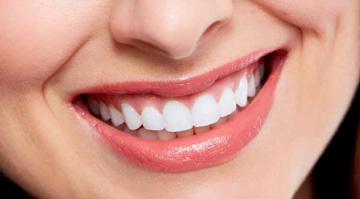What are the pros and cons of dental bonding?
 It’s important to know your options when it comes to enhancing the appearance of your teeth. For many of our patients, dental bonding provides an easy and relatively inexpensive way to correct minor issues such as chipping and discoloring, giving them a smile they can be proud of.
It’s important to know your options when it comes to enhancing the appearance of your teeth. For many of our patients, dental bonding provides an easy and relatively inexpensive way to correct minor issues such as chipping and discoloring, giving them a smile they can be proud of.
Dental bonding is one of the most common and least expensive of cosmetic dentistry procedures. Another advantage to bonding is that compared to veneers and crowns, it requires little to no removal of tooth enamel. Most procedures involving dental bonding also do not require anesthesia.
It’s important to note that the material used in dental bonding is not as strong as your real teeth, so biting on fingernails or chewing on pens can actually chip the dental bonding material. Many patients forget that dental bonding only lasts a few years before it needs to be repaired and is not as strong as other restorative procedures, such as crowns and veneers. It is also not as stain resistant.
There are some limitations to the restorative impact that bonding can have, so we often recommend this option for small cosmetic changes, for temporary correction of cosmetic defects, and for correction of teeth in areas of very low bite pressure that often occurs at the front of the mouth.
Our team will provide a full assessment to help you determine whether dental bonding is the best solution for you.
Estimated Cost for Dental Bonding
Dental bonding is a great treatment option for those who need to fix unhealthy teeth and restore a glowing smile. The average cost of dental bonding ranges from $300 to $600 per tooth. During your appointment, we’ll help you check with your insurance provider to see if your plan covers at least some of the cost.
There are two forms of dental bonding: direct composite resin bonding and indirect adhesive bonding.
Direct Composite Resin Bonding
Direct composite resin bonding is the process where dentists use tooth-colored composite resin to fill cavities, repair chips or cracks, close gaps between your teeth and build up the worn-down edges of teeth.
The composite resin is applied and sculpted to the surfaces of teeth that show most prominently when you smile, for minimally invasive smile makeovers. The clinical term for this type of filling is ‘direct composite veneers’ but in layman’s terms they are typically called
“bonding.”
Adhesive Bonding
Adhesive bonding, as opposed to direct composite bonding, is the process of attaching an already-made restoration to a tooth. This method is commonly used for esthetic crowns, porcelain veneers, bridges and inlays or onlays, but can also be used for prefabricated composite resin materials as well.